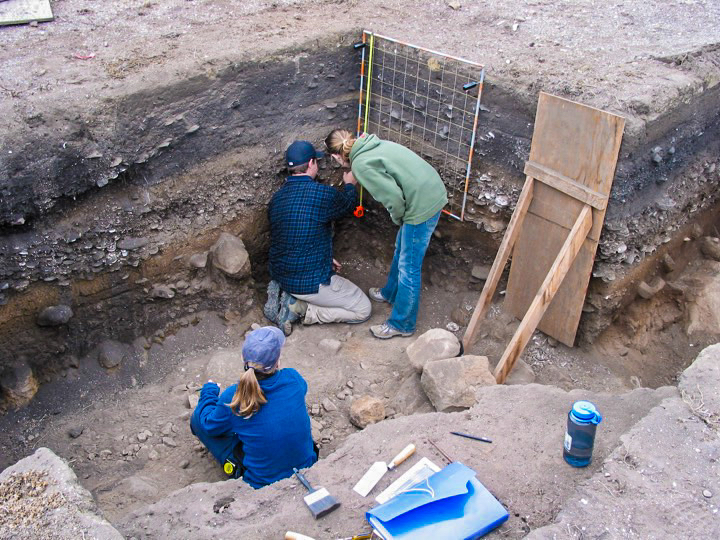CAMARILLO — CSU Channel Islands (CSUCI) Professor of Anthropology Jennifer Perry, Ph.D., has been awarded $57,806 from the National Science Foundation (NSF) to expand her research into those who lived on California’s Channel Islands for the last 10,000+ years.
“We’re looking at human-environment interactions through time, trying to understand how people lived on the Channel Islands,” Perry explained. “What we are looking at are archaeological sites along the channel that have evidence of human occupation over the past 10,000 years or more. From plants and animals and artifacts, we can look at change through time, such as changes in climate, and how people responded to that change.”
The project is titled “Collaborative Research: Re-evaluating a Trans-Holocene Record of Human-Coastal Interactions on the Channel Islands Archipelago, California.”
The Holocene Epoch describes the current geological epoch, which began approximately 11,650 years ago, right after the end of the Ice Age. “Trans-Holocene” means Perry and her collaborators will be looking at the entire Holocene epoch rather than just a slice of it. It is also referred to as the Anthropocene as acknowledgement of the global scale of human impacts.
The project will take a closer look at artifacts and other information from archaeological sites on three different islands across the archipelago: Santa Cruz, San Clemente and Catalina. The idea is to dig more deeply into the research conducted on these islands, which have a good cross section of information about the different indigenous peoples who inhabited these islands for thousands of years: the Chumash on the northern islands and the Tongva in the southern islands.
“These are all sites that have been excavated previously, and which are known to have deposits that span 10,000 years of human occupation,” Perry said. “We are not going to do a giant excavation. We are looking at existing collections resulting from archaeological work done from the 1970s through the 2000s.”
Artifacts and soil samples gathered through the years can now be analyzed more thoroughly, thanks to modern technology.
“We can go back on these collections with new technologies to answer other questions,” she said. “When the work was done, we didn’t have the technology to identify plants, for example, or that a stone bowl was used for plants. Now we can prove that.”
The project is groundbreaking in several ways, Perry explained. For one thing, the grant is part of a $250,000 grant that spans across three institutions: CSUCI, UCLA and CSUCI’s primary collaborator, the Natural History Museum of Los Angeles County.
“All of the co-principal investigators (PIs) on the grant are women, which is extremely rare in this field,” Perry said. “And in archaeology, it’s often very hard to get indigenous people involved. We have strong indigenous collaboration.”
Perry describes the project as a “labor of love” that took years of research and cultivating relationships with fellow anthropologists and tribal leaders whose ancestors settled the Channel Islands. Perry’s primary collaborator is Amy Gusick, Ph.D., an associate curator at the National History Museum of Los Angeles County, whom she has known since both were graduate students at UC Santa Barbara.
The project is especially meaningful for Perry as she will be revisiting a site she first excavated an undergraduate. It was her very first field class and helped ignite her passion for archaeology and anthropology. She considers herself living proof of the value of undergraduate research.
“It’s a joy for me because I’m a first-generation college graduate and I had this dream about archaeology,” she said. “I am one of the poster children for the impact of experiential (hands-on) learning. This same experience comes back repeatedly for my students.”
Unearthing answers to questions dating back thousands of years is critical to the present, she said, because there are lessons the land holds that can benefit us today.
“We are looking at the Anthropocene in a multidimensional way with this project,” Perry said. “When we look in all directions, it will tell us more about how we can navigate our environment today.” On the Channel Islands, “it’s a story of flexibility and resilience. These people were as smart if not smarter than we are, and we need to respect our ancestors and be grateful for the good things they have done.”
About California State University Channel Islands — CSU Channel Islands (CSUCI) is reimagining higher education for a new generation and era. We are an innovative higher education institution that enables students to succeed and thrive – serving as an engine for social and economic vitality that provides the intellectual resources necessary for a thriving democracy. With more than 7,000 students, 1,200 employees and 14,000 alumni, CSUCI is poised to grow in size and distinction, while maintaining one of the most student-focused learning environments in public higher education. Connect with and learn more by visiting www.csuci.edu or CSUCI’s Social Media.

